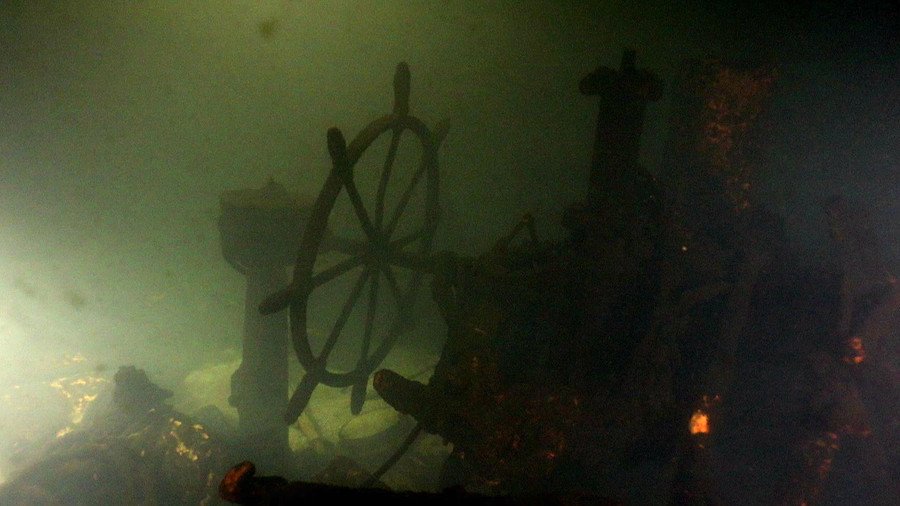‘Legendary’ destroyer sunk during ‘Russian Dunkirk’ discovered in Gulf of Finland (PHOTOS)

A Finnish-Russian team has discovered “one of the most legendary ships of the Russian fleet” on the bottom of the Gulf of Finland. It sunk in 1941 during the evacuation of Tallinn after hitting a German mine.
Russian Underwater Exploration Team and Finnish search team SubZone joined together in an effort to find the “place of death” of the ‘Novik’ destroyer in the waters near Cape Juminda, northern Estonia. The ship “was the fastest ship on the planet” at the time of commissioning in 1913 and participated in almost all naval battles in the Baltic Sea during WWI, according to researchers.
After their dive on Saturday, the group posted several photos of the ship. The pictures featured the details of vessel, that survived more than 70 years underwater, including the Coat of Arms of the Soviet Union on the stern and machine telegraphs. The wreckage also featured the “clearly visible” name of the ship at the time of sinking “Yakov Sverdlov” (‘Novik’ received this new name in 1926).
The exact location of the “legendary” ship wreckage was pinpointed by Russian historian Mikhail Ivanov after he studied German archives. A sonar search in the designated area showed a wreck resembling the shape of the destroyer.
The vessel sunk after hitting a mine on August 28, 1941, during one of the most devastating naval engagements in the Baltic Sea in WWII, the Soviet evacuation of Tallinn. The blast split the hull in two and the vessel was buried at the depth of 75 meters in the middle of the Gulf of Finland.
During the 1941 evacuation of Tallinn, also known as Russian Dunkirk, around 200 ships and thousands of military personnel and civilians were ferried out of the encircled base in Estonia with massive losses.
If you like this story, share it with a friend!















